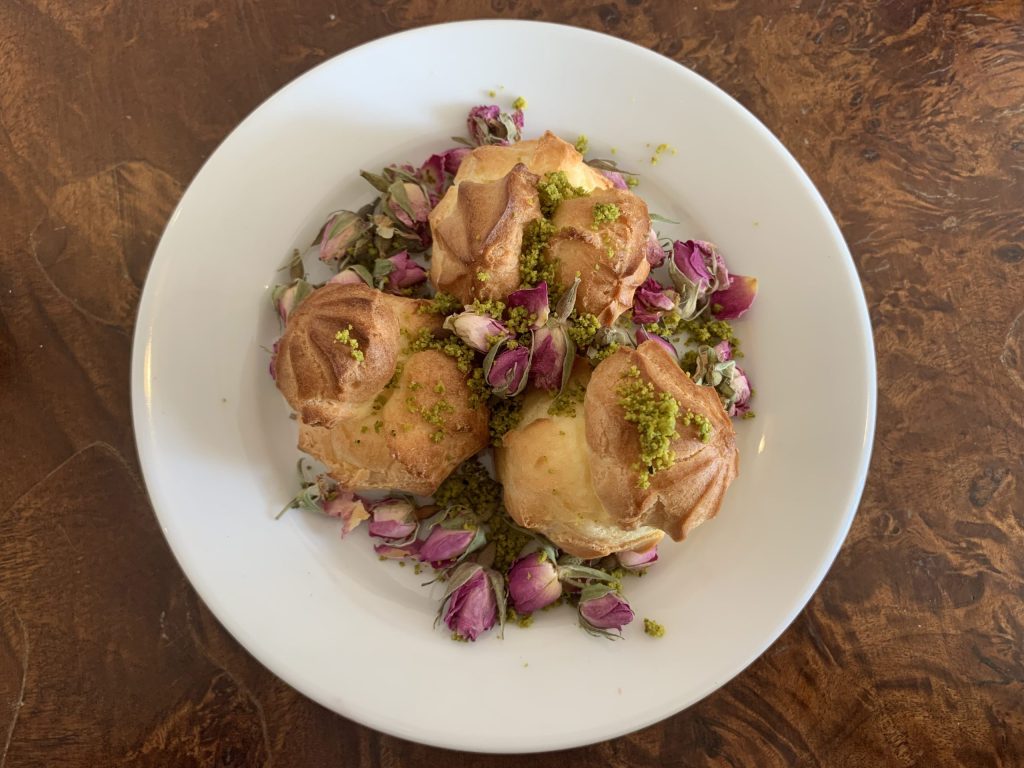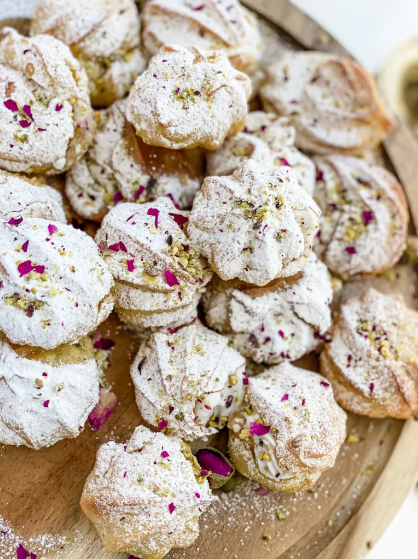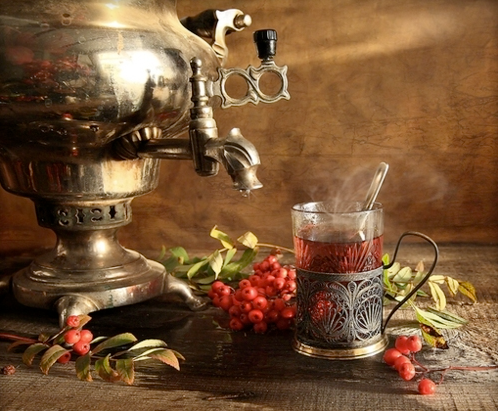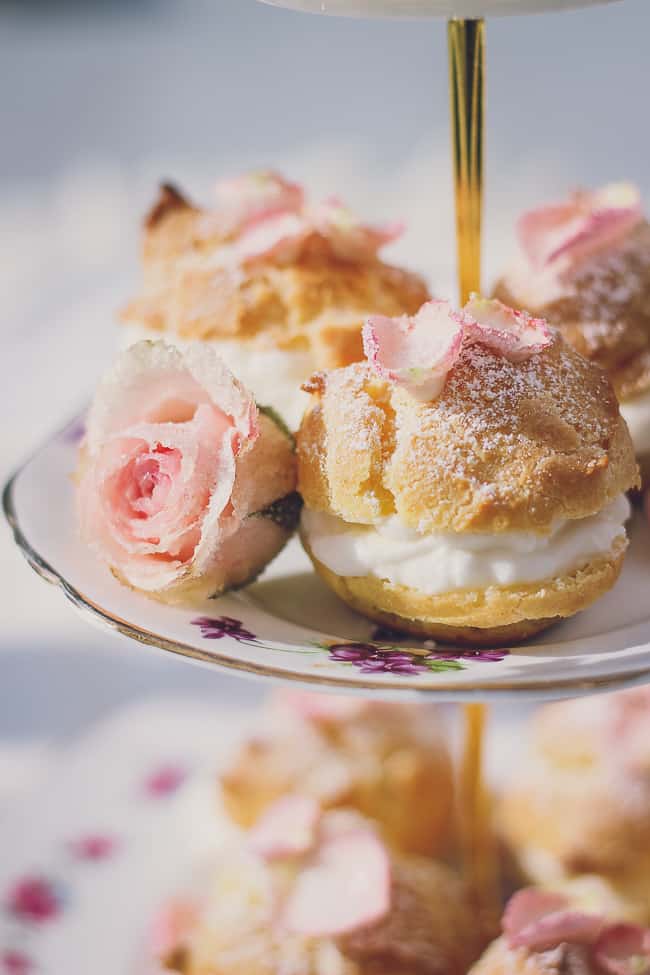Noon Khamei and Human Rights Protests in Iran
Noon Khamei in Iran, as well as desserts throughout the world, are an important and eye-opening way to look at world history and culture. The ways in which we share desserts reveal colonization or alliances between countries and empires. And the ways we indulge in them expose wealth disparities or moments of political calm. Today we’re raising awareness about the protests happening in Iran and exploring what lead to them through the exploration of a beloved dessert in this country.

Noon Khamei with pistachios and roses
Noon Khamei
These beautiful little dollops of puffy pastry and whipped cream are a hugely popular dessert in Iran. In Farsi, Noon Khamei translates to “whipped cream bread” and although Iranians enjoy them year-round, they’re especially beloved on the Persian New Year in March.
If you’re familiar with profiteroles, you may recognise these two desserts’ similarities. It’s true that Noon Khamei was inspired by the iconic French cream puffs, however, the moment they entered Iran in the early to mid-twentieth century, they took on a life of their own. The Iranian palate created something new in the Noon Khamei that had a bit less sugar and of course, a touch of rosewater.

Vegan Noon Khamei dusted with icing sugar and rose (Plant-Based Persian)
Rose is one of the main defining tastes in Iranian cuisine. Although there are over sixteen thousand different types of roses grown today, the damask rose is the one used to make rose water. It’s difficult to say exactly where this rose came from in the world because it’s so ancient, but many historians agree that it was most likely somewhere around Southwest Asia and North Africa. Because Iran is right in the midst of that area, the country has an ancient relationship with the flower. Like Turkey’s connection with roses that we covered in our shaved ice blog, people from Iran have been using roses in food, perfume, religion, and medicine since the 11th century at least.
If you are trying some of these delicious rose-flavoured Noon Khamei, you’ll have to make sure you’re having them with tea. Tea is a crucial aspect of Iranian dessert culture and there is almost a ritual to the pairing of it with pastries. Dessert and tea aren’t something to top dinner off with in Iran, instead, they are treated as a separate and distinct moment. Strong and dark tea is chosen for a morning dessert pairing, and something lighter pairs best with the afternoon or evening. To enjoy it the traditional way, you must hold a sugar cube between your teeth while drinking, which sweetens the tea. If you’re curious about what you can try with your Noon Khamei, you can check out our blog on different types of tea! Interestingly, before the nineteenth century, coffee was always the drink of choice with these dessert moments. However, like with the French profiteroles, the inclusion of tea in Iranian dessert culture is a distinctly Iranian tradition that was influenced by neighbouring countries, mostly India.

Tea is a moment of calm and ritual (Friendly Iran)
Dessert Culture in Iran
Iran has one of the oldest continuously inhabited cities in the world and it has an incredibly long and rich recorded history as a country. Before turning a historical leaf in 1935 by changing its name, Iran was known as Persia. This name descended from the Persian Empire, which was a complex empire that existed from 559 B.C.E. to 331 B.C.E. Although it was a world power that expanded and conquered many nations, it’s regarded as being unique in its maintenance of the conquered culture. It’s speculated by historians that the original monarchal Shah of the Persian Empire, Cyrus the Great, felt he could best maintain control if he kept the kings alive and allowed the nations to continue their religions, customs, and languages – we call it tolerance, compassion, and open-mindedness.
This attitude of sharing culture is something that’s still present in many aspects of Iranian culture today. In looking at the desserts of Iran, although they are clearly distinct, there are many other countries’ influences (like that of profiteroles or tea for instance). The original Persian Empire included Egypt, Turkey, India, Afghanistan, and Pakistan, so there is a lot of exchange between these countries’ cuisines. The ways in which Iran makes desserts their own are very evident. Iranians tend to add local spices, such as adding rose water, saffron, and cardamom. We have a blog celebrating the Persian New Year (or Nowruz) with desserts if you would like to learn about more Iranian desserts to try.

Rosewater Cream Puffs with Sugared Rose Petals (Honest and Tasty)
Protests for Human Rights in 2022
Lately, the sweet taste of Noon Khamei has been strained with agony in Iran. The country has been brimming with protests following the death of 22-year-old Mahsa “Jina” Amini, who died in police custody on September 16th, 2022. She was arrested for Iran’s strict morality laws that require women to wear the hijab (also known as the veil) in public. The consequence for not adhering to these laws can be a hefty fine or even jail time (and in the past, these sentences were more severe, including lengthier prison time and seventy-four lashes). However, there was footage of Mahsa Amini wearing her veil the day she was arrested by the morality police. They stated she wasn’t wearing it properly, but her father insists that she was. As of October 2022, only the moment of her entrance into the police station and her collapse into a coma have been released to the public. The Iranian police have not provided access to the moments in between. It has become very transparent to many Iranian people that her death was a result of police brutality and that it represents the government oppression many have been fighting against for decades.
These protests come from a long history of Iranians’ discontent with their restricted freedom. While the Shah’s regime was far from perfect, before the 1979 Islamic revolution Iran was following many of the standard gender equality developments of the twentieth century such as giving women access to higher education, the right to vote, and even casually wearing bikinis on the beach. But there were also limitations to this freedom, including it being illegal to wear a hijab. A new regime in 1979, inspired by Ayatollah Khomeini and his fundamentalist revolution, installed a theocracy (a system of government run by clergy). Despite the majority of the population being secular, new laws enforced religion into public life, including the mandatory wearing of hijabs. This policing of women was just one example of how the country fundamentally changed almost overnight. Protests started only weeks after the political shift, once people realised that this new government was planning even more limitations on freedom. People chanted, “We didn’t have a revolution to go backward.” Iranian laws have fluctuated throughout the years since the 1979 Revolution, yet many incredibly brave women and men have continued to protest despite criminal records, physical harm, lengthy prison sentences, and indiscriminate killings of protesters.

Photo by Ali Eshtyagh of a protest with signs of Mahsa Amini (DW)
The summer leading up to this current 2022 wave of human rights protests was filled with a lot of frustration regarding water shortages, teacher protests, economic struggles due to sanctions from the West, and accusations of political corruption. The tragic event of Mahsa Amini’s death united many people in varying spaces of unrest who were pushed to the edge. People launched mass protests; going on strike, burning their hijabs, and cutting off their hair in solidarity and contempt. It’s difficult to say exactly what has been happening at each moment because access is limited for outside news outlets and any video footage is prohibited. But there have been leaked videos and the BBC stated that “Iran Human Rights, a Norway-based group, has said at least 201 people, including 23 children, have been killed by security forces. Security forces have denied killing peaceful demonstrators, but they have been filmed firing live ammunition on the streets.”
These people are risking their lives to finally gain their freedom, equality, and human rights. If you’re looking for how to help, Time has created an article of resources to support protestors in Iran by donating, signing petitions, and raising awareness. It’s crucial to be talking about this topic as only international attention can pressure the current Iranian government to restore freedom and human rights to the Iranian people.
We hope this has inspired you to learn more about the protests and current political state in Iran. If you’d like to try the Noon Khamei dessert we’ve explored, you can try Iranian desserts near you and support Iranian chefs and bakeries in your area.




